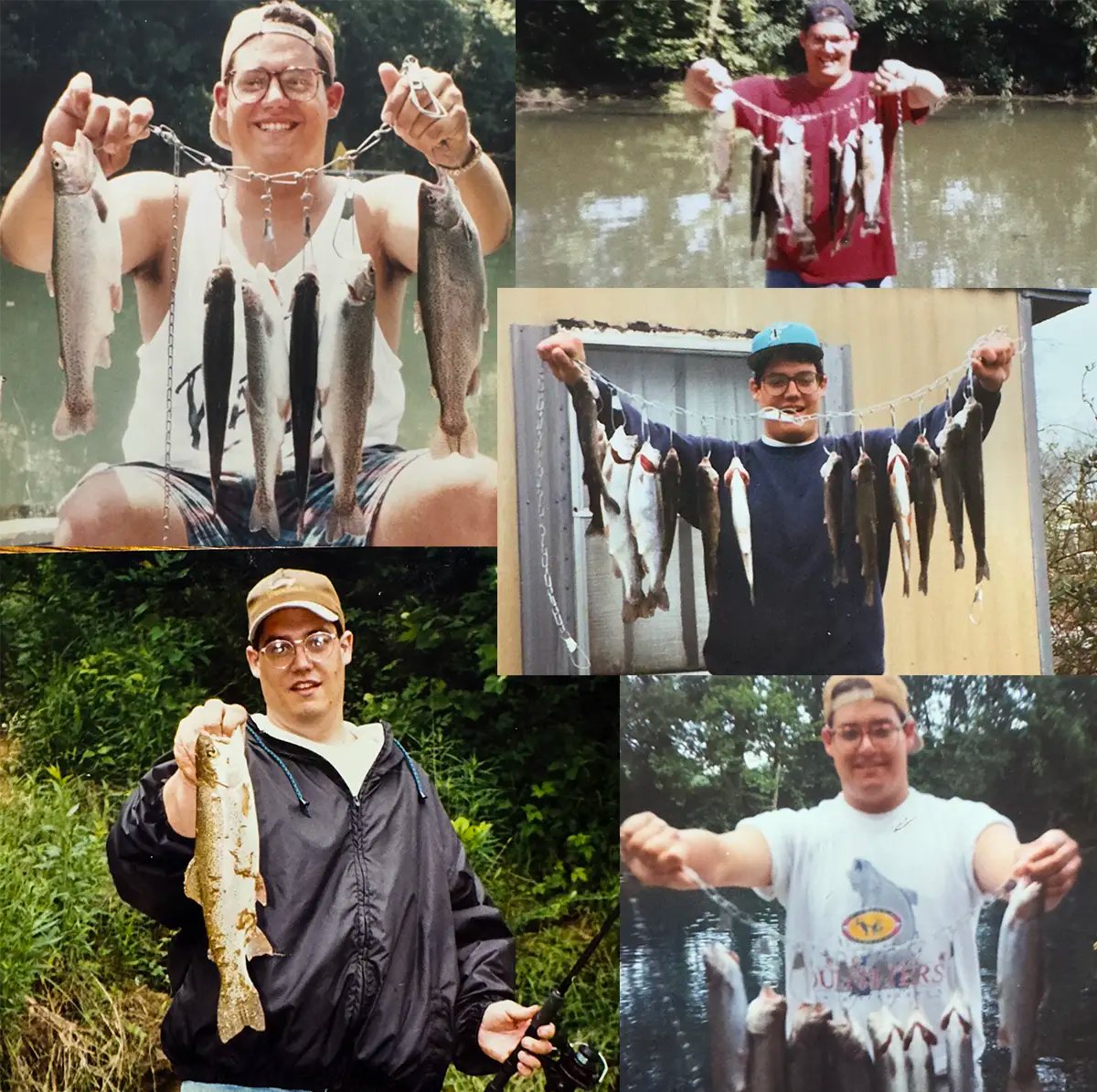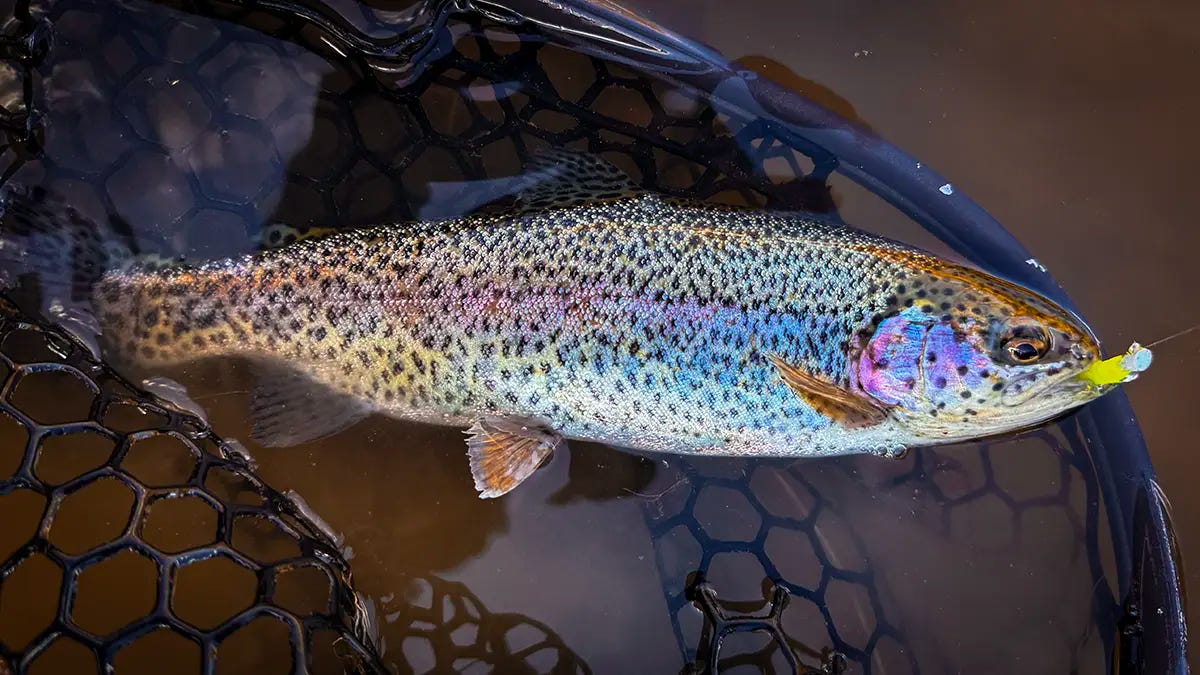The Best Way to Fish a Trout Jig
My favorite jig and my favorite way to fish it fools trout on small rivers, stillwaters, tailwater races and more
I don’t really enjoy eating trout, but I sure love to catch them, especially on a fly rod. But over the last year, I’ve also come to love fishing jigs on ultralight line as well as small hard baits with single hooks on BFS gear. After boating hundreds of trout on foot traveling, hiking and wading multiple streams, I’ve come to love how simple and effective one jig in particular is for trout fishing.
THE TROUT MAGNET - PERFECTLY SIMPLE
There are hundreds of thousands of anglers who have fished with Trout Magnets because they are so effective for catching trout. But the simple body and head went through dozens of iterations before they found the size, shape, weight and action that got trout to react the best. Years of testing went into what seems like a simple lure on trout waters from Arkansas to Pennsylvania before they perfected the jig combo.
The beauty of the Trout Magnet is how versatile it is for such a simple jig and how well it works on native trout as well as stocked or tailwater trout. It really is hard to beat for trout fishing. You can deadstick it. Or straight reel it. Or suspend it under a float and let it drift in the current. You can swing it and euro nymph with it on a long spinning rod in current.
MOST EFFECTIVE WAY TO FISH A MAGNET
Arguably, however, perhaps the best way to fish it other than letting it drift naturally under a float or with controlled line on a long rod is to twitch it. “Twitching a Magnet” is arguably the most effective way to fish it because it’s not reliant on the current or a float to present it.
It can be fished in current. It can fish in stillwater. It can fish multiple lanes if you want. It can fish at any depth you
want. Anglers can sight cast to visible trout. I have even been experimenting with a dropper rig where I put some split shot below it and let the split shot bump bottom in current while it rides just about them.
But just a Trout Magnet on their new Tungsten heads has become my go to jig for trout in small creeks and rivers where I wade and hike. As well as some still water stocked areas.
The video above is a good recent demonstration of how good twitching a Trout Magnet really can be for anglers.
HOW TO TWITCH A MAGNET
The video above I lay out my approach, how I maneuver the bait in the water. Basically, I will put a Trout Magnet on a Tungsten 1/32-ounce head. If the current is swift, I will add split shot or if I need a bit more casting distance. I fish it most of the time on 2-pound line on a light or ultralight rod. This combination gives me distance, sensitivity and lure control.
Then I will keep my rod at about a 45 degree angle upward and let the lure sink to the depth I want. Then I start a slow steady retrieve on the reel. Then I start adding shakes of the rod tip. These are subtle shakes. I want the lure to just undulate in the water like a small critter would in the water. It can mimic small baitfish, little terrestrials and aquatic invertebrates struggling along in the water. I will sometimes reel slowly, shake a little and let fall a second and continue my retrieve.
The beauty is you can tailor your retrieve to the conditions and the fish’s mood. Fish it ultra slow. Exaggerate your twitches and then let it fall. Let it drift with a twitch. There is a lot that can be done with such a simple jig.
I think it’s largely due to how much a Trout Magnet resembles. While you can choose wild colors, you are still presenting it naturally and that is often too much for trout. Unnatural colors presented naturally. I think it’s more of attractor colors presented naturally.

WHY I AM FISHING FOR TROUT LIKE THIS
I have been a hardcore bass fisherman for 4 decades. I’ve worked in the fishing industry for more than 25 years running the magazines for Major League Fishing (formerly FLW) and operations for the Wired2fish. As I’ve gotten into my 50s, I wanted to expand my horizons a bit more, knowing the years are going fast now.
I grew up fishing for whatever would bite. Crappie, bass, bluegill and even trout. In fact I fly fished and jerkbait fished for trout back around 1992-1994 timeframe on the Little Red River while finishing up college in Arkansas. Back then, my buddies loved to eat trout, and I was always game for a trip to the river to help them get some dinner.
People assumed I only knew how to bass fish because that was my primary focus for much of my career. But I have a bigger love for fishing creeks and rivers and expanding crossover methods in fishing across species and techniques. And I’m really into exploring new water to test my angling skills. So I try to take systems with me that are simple, produce and give me confidence I am covering the water effectively to know if fish are there.
Lately I have been crossing over between panfish, trout and bass borrowing techniques from all of the above and using them on the other species. I’ve also picked up a fly rod a lot more trout fishing because I like the natural test. But I almost always have my ultralight rod and my pocket box of Trout Magnets. I call it '“checking my work” as I’m not as accomplished yet with a fly rod as I am with conventional and BFS gear. So I need to make sure I thoroughly covered the area with my nymphs or drys.
A good place to test your meddle twitching a magnet is on clear streams where you can see fish. Or on recent plants where you have lots of willing participants. That will build up your confidence quick to get a feel for retrieve and your cadence. The shake is subtle. It’s not hopping the jig. It’s causing it to have a struggling swimming action.
Give the Trout Magnets a try with the shaking retrieve and I think you will find a new favorite way to catch trout on conventional gear.






